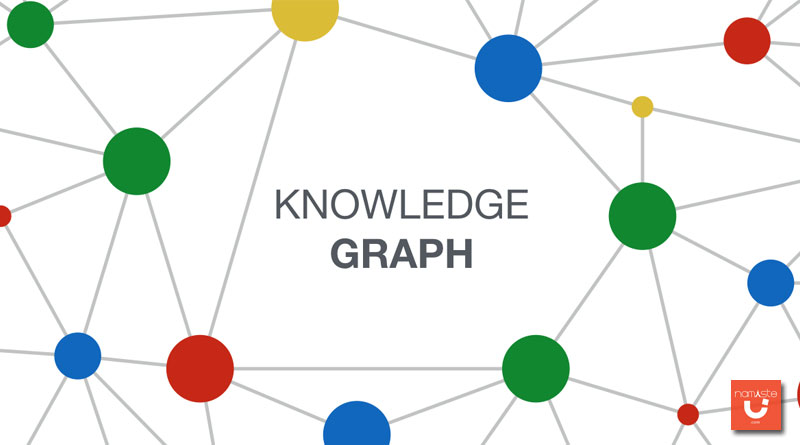The goal of every blogger, site owner, and content creator is to rank as high up the food chain (aka search engine results) as possible.
And the coveted top spot isn’t exclusively held by big fish players like CNN and Forbes, either. Every now and then, a regular old joe defies the odds and gets their website to the first page of search results. But it begs the question: how do they do it?
Well, climbing the search engine rankings is no longer a pipe dream, all thanks to a not-so-little-known feature called the Google Knowledge Graph.
What Is Google’s Knowledge Graph?
When Google first introduced the Knowledge Graph back in 2012, they said: “We’ve been working on an intelligent model—in geek-speak, a ‘graph’—that understands real-world entities and their relationships to one another: things, not strings.”
But exactly what role does Google’s Knowledge Graph play in the Internet of Things, and how can it help us get better rankings?
In a nutshell, this feature is a system that digests information and makes sense of how people, places, things, and everything in between are connected. It uses its superior crawling, indexing, and organizing capabilities to accumulate all this information into a vast database, making it easier to retrieve when someone like you or me enters a search term.
Not only does the Knowledge Graph help optimize the relevance of search results, it also birthed a discreetly powerful little tool in the shape of a box.
If you’ve noticed, in recent years there has been an addition on Google search results pages: a box that sits prominently at the top right area of the page. This is the Knowledge Graph card. It contains optimized information regarding what you’ve just Googled. All the knowledge contained in this small space is gathered from several sources across the web.
For example, when you enter “golden retriever” in the search field, you get a results page that links to different websites. On the right-hand side, you get the most basic bits of information about this popular dog breed in the Knowledge Graph card. All the facts included in it are those that are most searched for.
Since the Knowledge Graph was launched, the feature has gained a significant amount of traction among users. Although there are endless benefits and uses for this feature, Google’s black box is most popular with online businesses seeking to hit a higher position on the search results page.
If you’re one of those people, there are a few ways to leverage Google’s Knowledge Graph for the sake of rankings:
Content Strategy
This sage advice may be cliché, but it bears repeating: “Content is king.” Apparently, Google thinks so, too!
We’ve already established that the backbone of the Knowledge Graph is crawling and indexing. This means that in order for you to optimize your website, you have to follow Google’s automated processing concepts first. Content must be curated and structured with “newness” at the forefront of the priority list. It must adhere to the latest standards. Metadata should be kept relevant and injected in large doses.
If you concentrate on churning out only the best content, your readers will notice. And so will Google.
Use the Knowledge Graph Card to Your Advantage
Google provides brands that have been “recognized as an official representative for a topic” with their own knowledge graph. This allows them to make use of a feature that’s uncommon in organic search: suggesting changes.
You may only “unlock” this feature once you’ve met two conditions: (1) you must be signed in to Google as the owner of the topic’s website, Wikipedia page, YouTube channel, or Google+ page—in other words, you need to present evidence that you are the brand’s official online presence; and (2) you have your Web & App Activity switched on. And voila! You can now make direct edits to the Knowledge Graph card, including, but not limited to, changing the main image, URL, logo, and social media profiles.
Why should we bother with all of this? In 2016, the Knowledge Graph was found to have appeared in 19.19% of desktop searches, and as much as 20.83% of mobile queries. If you’re stuck on doing SEO and only SEO, you’re losing out.
Get Content Scraped for an Info Card
Another strategy to keep in mind is to intentionally create content that Google draws from for Info Cards. Most site owners refuse to get content scraped for fear that Info Cards will take away from their page clicks and diminish brand awareness. Quite the contrary.
The way to begin is to do what you should already be doing in the first place: creating high-quality content that piques people’s interest about specific topics. This should already help you rank higher.
What Now?
Why do we want to get high—maybe even first-page—rankings? Because we want to be visible right away to the people who require our products or services. This visibility translates to page clicks, and then to shares, then purchases, and then finally to profit.
But just when we thought we knew everything there is to know about search engines, Google turns the whole shebang on its head. The good news, it’s all uphill from here. Learn about how Google’s Knowledge Graph works, and get your information in there, stat. Your site will be on the first page of search results in no time.
Daniel Ross is part of the marketing team at Roubler.com — a scheduling and payroll software platform founded in Australia. Their mission is to change the way the world manages its workforces.

